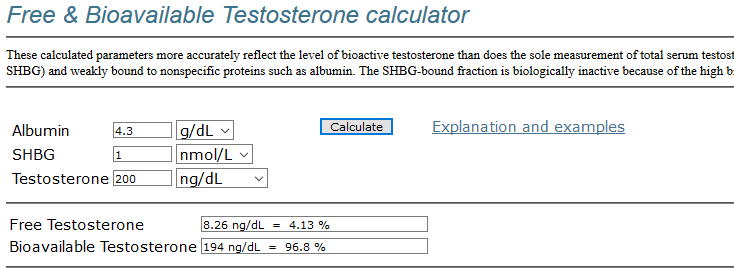That is a study I posted but read the post I linked above. The post I wrote detailing my SHBG, Total T and free T before and after 4 weeks of oxandrolone.
Here I will copy it verbatim:
Here’s my approximate T-values on 100 mg/week of Tcyp (50 mg twice weekly):

Now add on top of the TRT add the 50 mg/day of oxandrolone. After 4.5 weeks (1 week at 25 mg/day + 3.5 weeks at 50 mg/day):

There’s competing effects here.
- SHBG drops significantly which speeds up testosterone MCR and reduces total serum testosterone by about 50% (the testosterone is getting secreted more rapidly and the lower SHBG is effectively reducing half-life/binding efficiency).
- The lower SHBG results in less of the remaining total serum testosterone being bound vs free. So you can see I ended up with close to the same free T (18.7 ng/dL before vs 17 ng/dL after). Bioavailable went from 438 to 399.
As SHBG gets closer to zero you’ll lose even more ground. So don’t crash your SHBG (just like estradiol) otherwise you risk having no testosterone (and hence lower estradiol) to balance synthetic AAS that you may also be administering. Depending on whether synthetic AAS is aromatizing/5-alpha reduced, this may or may not be a huge deal. For the guys in article above, they had ED effects that may be attributed to significant reduction in SHBG while on exogenous T.
Here’s a hypothetical example on same 100 mg/week of Tcyp but now you’ve taken your SHBG down to 1 (your liver is extremely sensitive to oxandrolone here, let’s say your total T is now 200 ng/dL (I’m just giving example):
Almost all of your serum T is bioavailable (96.8%) but there’s not much around because you’re hyperexcreting it compared to an SHBG of 30 or 50. So another consideration to keep in mind.
